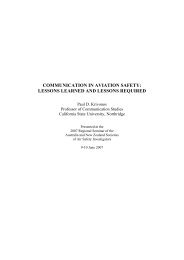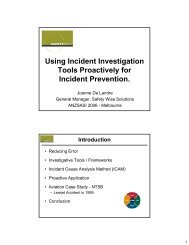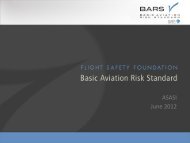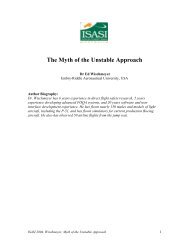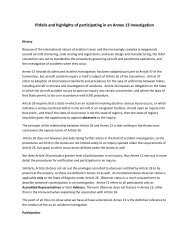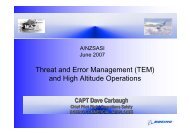Using Incident Investigation Tools Proactively for Incident ... - ASASI
Using Incident Investigation Tools Proactively for Incident ... - ASASI
Using Incident Investigation Tools Proactively for Incident ... - ASASI
You also want an ePaper? Increase the reach of your titles
YUMPU automatically turns print PDFs into web optimized ePapers that Google loves.
_____________________________________________________________________<br />
Table 2.<br />
Titles of Elements <strong>for</strong> Reactive and Proactive Use of ICAM<br />
REACTIVE ICAM ELEMENT<br />
PROACTIVE ICAM ELEMENT<br />
• Absent / Failed Defences • Risk Controls<br />
• Individual / Team Actions • Risk Taking Behaviour<br />
• Task / Environmental Conditions • Risk and Behavioural Influences<br />
• Organisational Factors • Management Controls<br />
Figure 3 below, displays the proactive and reactive direction of use of the model. Proactive<br />
application starts on the left-hand side of the model with Management Controls and works<br />
through the Risk and Behavioural Influences, Risk Taking Behaviour, concluding with the<br />
Risk Controls.<br />
Figure 3.<br />
Reactive vs Proactive Direction of Use of the ICAM Model<br />
As an example of this approach - given a new operation, acquisition of new equipment, staff<br />
selection etc. the use of the Risk Management Model would start by identifying the types of<br />
Management Controls that should be in place aimed at risk reduction and error prevention.<br />
Examples could include: change management strategies, <strong>for</strong>mal risk assessments and training<br />
needs assessments.<br />
___________________________________________________________________________________<br />
~ ANZSASI 2006 : De Landre, Gibb and Walters ~<br />
Page 6 of 12




